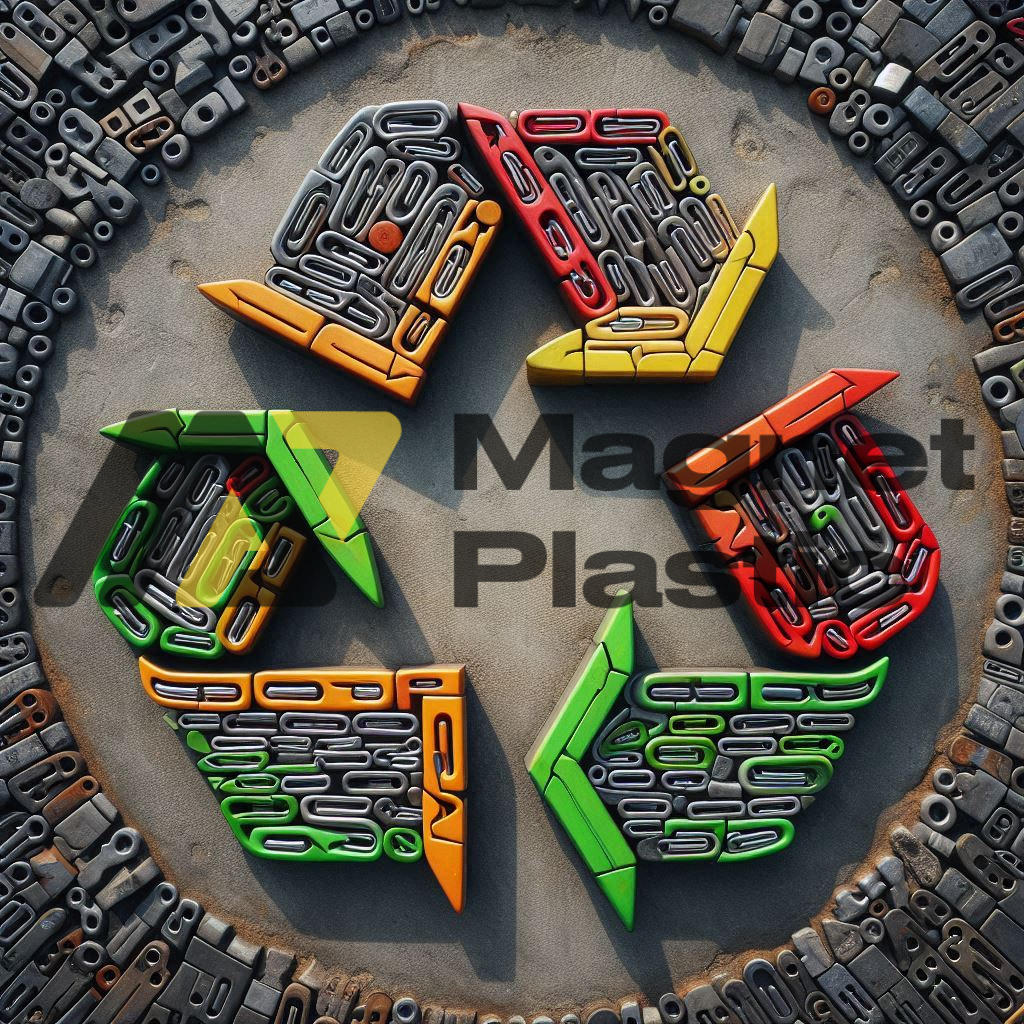Magnets and Recycling
In today’s world, sustainability and proper waste management are more important than ever. One of the lesser-known but crucial elements in the recycling process is magnets. These devices, simple in concept but powerful in application, play an essential role in the separation and recovery of recyclable materials. This article explores how magnets contribute to recycling and their impact on creating a greener future.
The Magic of Magnets in Recycling
Magnets are primarily used in metal recycling, where their ability to attract ferrous objects (containing iron) is indispensable. In recycling plants, magnets are integrated into various stages of the process to efficiently separate ferrous metals from other materials. There are several types of magnets used in these applications, including electromagnets and permanent magnets.
Types of Magnets and Their Applications
Suspended Magnets:
These magnets are suspended above conveyor belts that move recyclable materials. As the waste passes underneath, ferrous metal objects are attracted and removed from the waste stream, facilitating their separation and subsequent recycling.
Magnetic Drums:
Primarily used for separating large volumes of metals, magnetic drums rotate and, in doing so, capture ferrous metals that adhere to the drum and are transported to a separate collection area.
Overband Magnets:
Installed above conveyor belts, these magnets remove metallic objects before the waste progresses to later stages of processing, ensuring that only non-ferrous materials continue in the recycling chain.
Environmental Benefits of Using Magnets in Recycling
The use of magnets in recycling offers multiple environmental benefits. First, it enables more efficient and cleaner separation of recyclable materials, which reduces the amount of waste that ends up in landfills. Additionally, recovering ferrous metals contributes to conserving natural resources, as recycling metals uses less energy and resources compared to the extraction and processing of virgin minerals.
Innovations and Future
Magnet technology in recycling continues to evolve. Recently, more powerful and specific magnets have been developed that enable the recovery of non-ferrous metals, such as aluminum and copper, through techniques like eddy current separation. These technological advancements are expanding the capabilities of recycling plants, allowing for greater material recovery and a significant reduction in environmental impact.
Conclusion
Magnets are undoubtedly unsung heroes in the field of recycling. Their ability to efficiently and cost-effectively separate metals makes them an invaluable tool in the fight for sustainability and environmental protection. As technology advances, the role of magnets in recycling will become even more crucial, helping us build a cleaner and greener future. Appreciating and understanding the importance of these devices is essential for valuing the global efforts in waste management and recycling.
